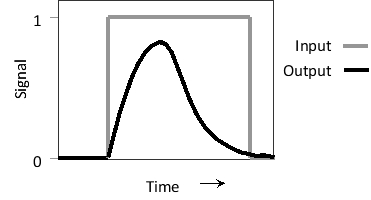Question 29
(Short Answer)
Consider the two feed-forward loops below containing three transcription regulators A, B, and C, where A receives the input signal and C generates the output. In the so-called coherent loop (left), A activates C both directly and indirectly, whereas in an incoherent loop (right), A activates C via one route and inactivates it via the other. Answer the following question(s) based on these network motifs.

-Would you expect a coherent (C) or an incoherent (I) loop to generate the following response pattern? In this example, A is stimulated by the input, and the transcription of C is measured as the output. Write down C or I as your answer.

Answer
The two-phase respo...
View full Answer